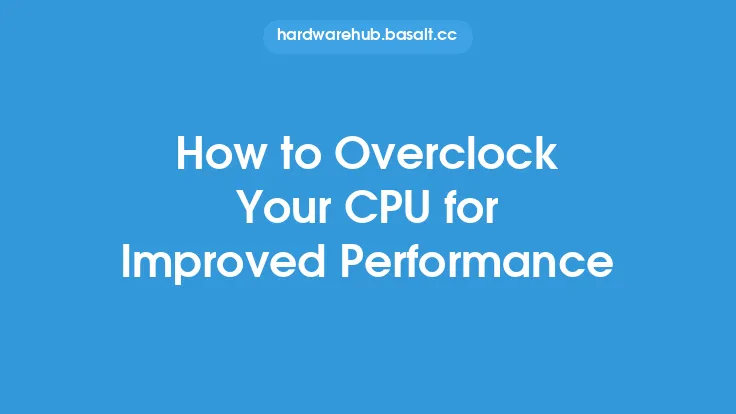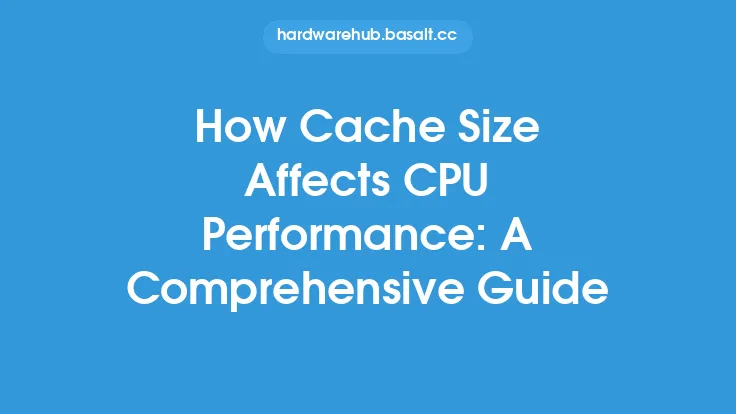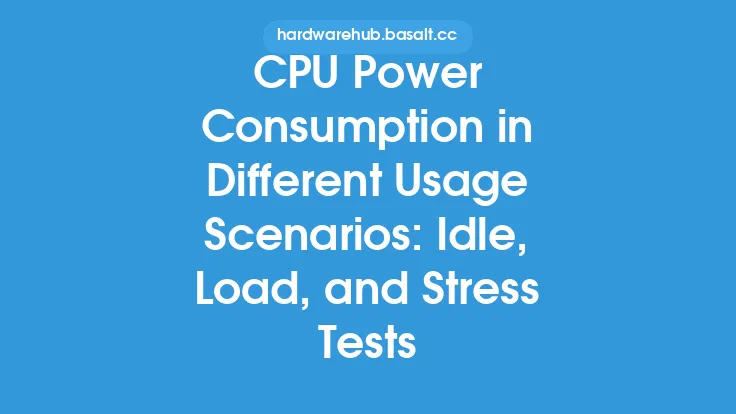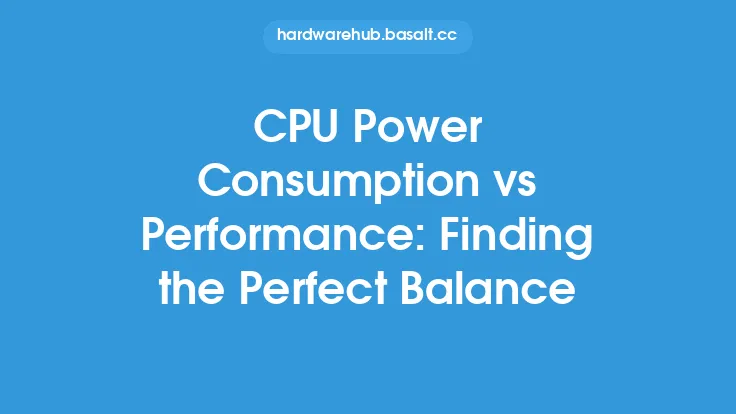The central processing unit (CPU) is a crucial component of any computer system, responsible for executing instructions and handling tasks. One important aspect of CPU design is power consumption, which has a significant impact on system performance. In this article, we will delve into the details of how CPU power consumption affects system performance, exploring the underlying principles and technical aspects.
Introduction to CPU Power Consumption
CPU power consumption refers to the amount of electrical power required to operate the processor. This power is used to drive the various components of the CPU, including the execution units, caches, and control logic. The power consumption of a CPU is typically measured in watts (W) and is influenced by several factors, including the clock speed, voltage, and architecture of the processor. A higher power consumption generally results in increased heat generation, which can impact system reliability and performance.
CPU Architecture and Power Consumption
The architecture of a CPU plays a significant role in determining its power consumption. Modern CPUs are designed using complementary metal-oxide-semiconductor (CMOS) technology, which uses a combination of transistors and diodes to implement logic gates and other digital circuits. The power consumption of a CMOS circuit is proportional to the frequency of operation, voltage, and capacitance of the circuit. As a result, CPU architects use various techniques to reduce power consumption, such as dynamic voltage and frequency scaling (DVFS), clock gating, and power gating. These techniques allow the CPU to adjust its power consumption based on the workload, reducing energy waste and heat generation.
Clock Speed and Power Consumption
Clock speed is a critical factor in determining CPU power consumption. A higher clock speed results in increased power consumption, as the CPU must switch its transistors more frequently to execute instructions. This increased switching activity leads to higher dynamic power consumption, which is the dominant component of CPU power consumption. To mitigate this effect, CPU manufacturers often use techniques such as clock throttling, which reduces the clock speed when the CPU is not fully utilized. Additionally, some CPUs feature turbo modes, which allow the processor to temporarily increase its clock speed to improve performance during short periods of high workload.
Voltage and Power Consumption
Voltage is another important factor in determining CPU power consumption. A higher voltage results in increased power consumption, as the CPU must drive its transistors with a higher voltage to maintain reliable operation. To reduce power consumption, CPU manufacturers often use lower voltage levels, which can impact performance. However, some CPUs feature adaptive voltage and frequency scaling (AVFS), which adjusts the voltage and frequency based on the workload to minimize energy consumption while maintaining performance.
Thermal Design Power (TDP) and Power Consumption
Thermal design power (TDP) is a measure of the maximum power consumption of a CPU under normal operating conditions. TDP is an important factor in determining the cooling requirements of a system, as it indicates the maximum amount of heat that the CPU can generate. A higher TDP generally results in increased power consumption, as the CPU must be designed to handle the higher thermal loads. However, some CPUs feature lower TDPs, which can result in reduced power consumption and heat generation.
Power Consumption and System Performance
CPU power consumption has a significant impact on system performance. A higher power consumption can result in increased heat generation, which can impact system reliability and performance. Additionally, high power consumption can lead to increased energy costs and reduced battery life in mobile systems. To mitigate these effects, system designers often use techniques such as power capping, which limits the maximum power consumption of the CPU to prevent overheating and reduce energy waste.
Conclusion
In conclusion, CPU power consumption is a critical factor in determining system performance. The architecture, clock speed, voltage, and TDP of a CPU all impact its power consumption, which can have significant effects on system reliability, performance, and energy efficiency. By understanding the underlying principles of CPU power consumption, system designers and users can make informed decisions about CPU selection, cooling, and power management to optimize system performance and minimize energy waste. As CPU technology continues to evolve, it is likely that power consumption will remain a key consideration in CPU design, driving innovation in areas such as low-power architectures, advanced cooling systems, and power management techniques.





